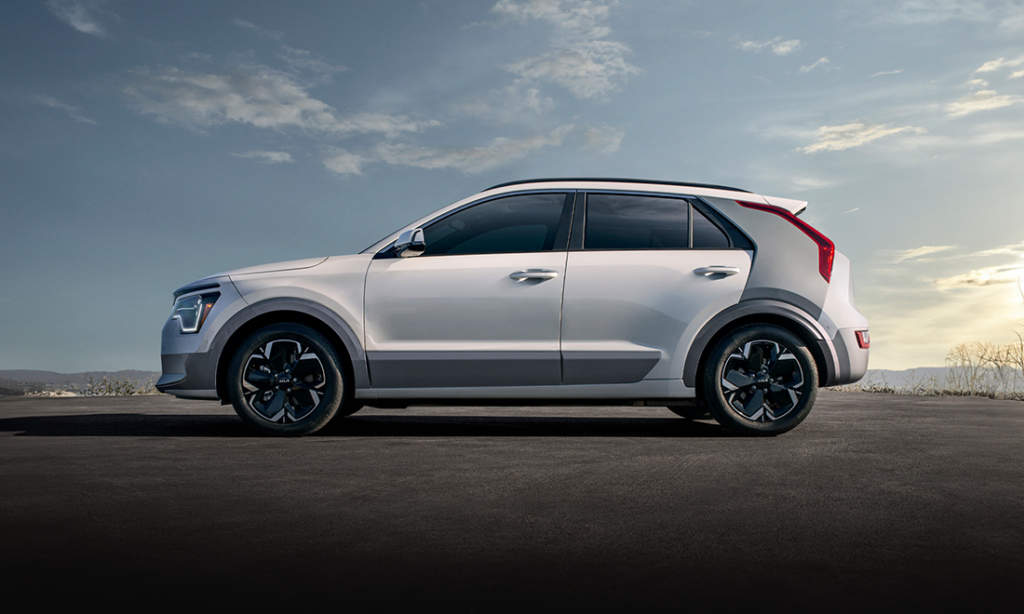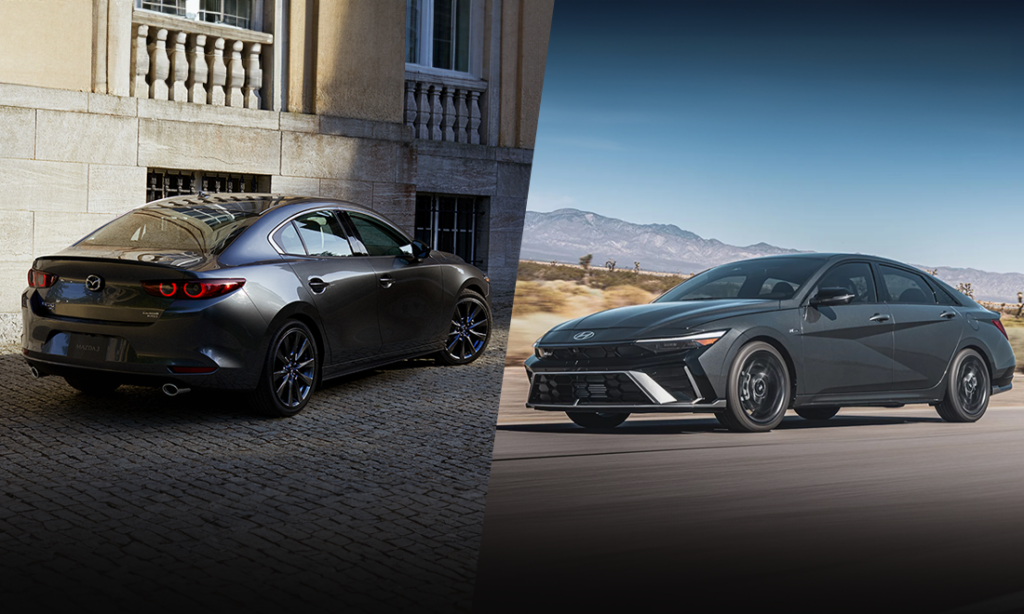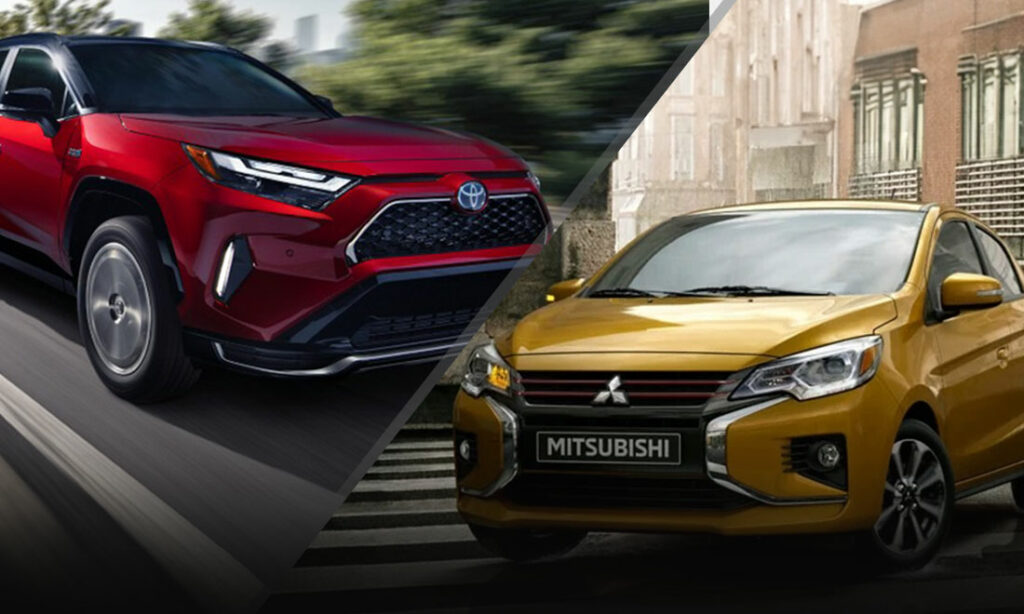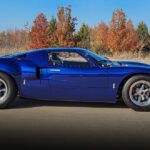Ford Ranchero vs Chevy El Camino
Two American utes go head-to-head in a battle of power, design, and actual utility. Which is better, the Ford Ranchero or the Chevrolet El Camino?
It’s a Car, But Also a Truck
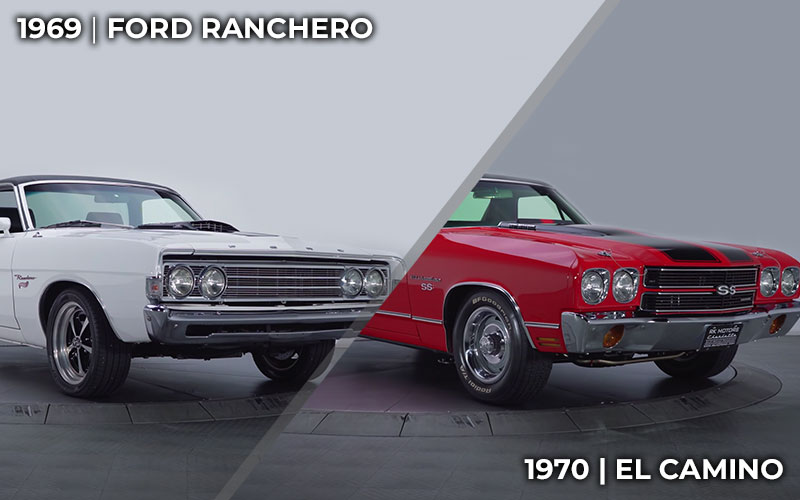
The history of coupe utility vehicles, or utes, in America essentially starts with the Ford Ranchero back in 1957. Ford took elements from their Ranch Wagon and Courier panel van models, but instead of offering a covered cargo or passenger area, they installed a truck bed at the rear of the Ranchero. This unique car/truck design generated a decent amount of public interest, which led to pleasant sales numbers for Ford.
Chevrolet, not to be outdone, followed the recent sales success of the Ford Ranchero and introduced their own model with the same premise. The Chevrolet El Camino was introduced to the public in 1959 following the same techniques in design that Ford had implemented in the Ranchero. The El Camino shared similar body styling and components to the Chevrolet Brookwood station wagon and panel van models, but featured a truck bed.
These two ute rivals went through multiple generations over the next couple of decades, but there was a point in their rivalry that stands as the pinnacle between them. In 1968, both the Ford Ranchero and the Chevrolet El Camino were redesigned with muscle car styling, muscle car power, and left us with some of the most iconic iterations of these models to ever have been made. We’ll start this classic comparison by focusing on those generations and find out which one was the better American ute back then, plus which one should you be shopping for right now.
Ford Ranchero vs Chevrolet El Camino Specs
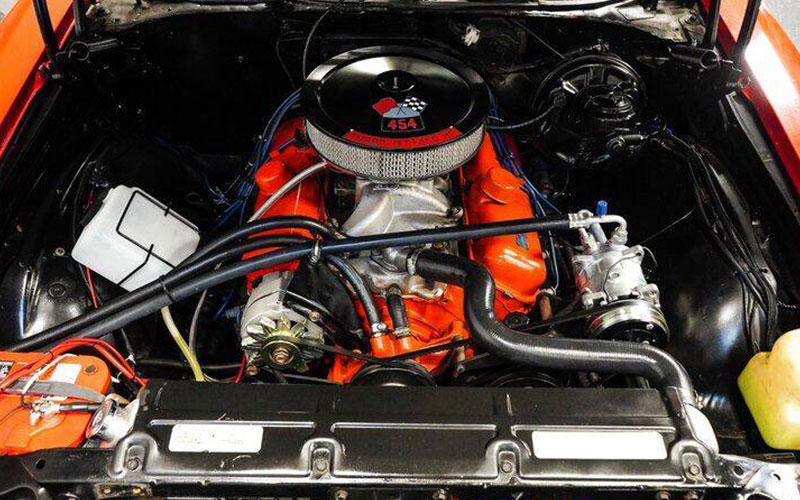
In 1968, Chevrolet introduced the third generation El Camino. It still rode on the rear-wheel-drive A-body platform from the previous generation, but its exterior and interior was updated to align with the Chevelle of the same time. This parallel of design elements also came with the available options from the Chevelle, allowing this El Camino to be sold as Super Sport model. The El Camino SS debuted with a 396 CID V8 that made anywhere from 325 to 375 horsepower. The 1969 model year saw the introduction of the larger 454 CID V8 in SS models that could make up to 450 horsepower.
Aside from the muscle found in the SS models, the El Camino also offered some more affordable and efficient options under the hood. Over the course of the generation of this Chevrolet El Camino, there was the choice of two different straight-6 engines and three smaller V8 engines. A standard 3-speed manual transmission was installed across the lineup, but a 4-speed manual and 3-speed automatic were optional.
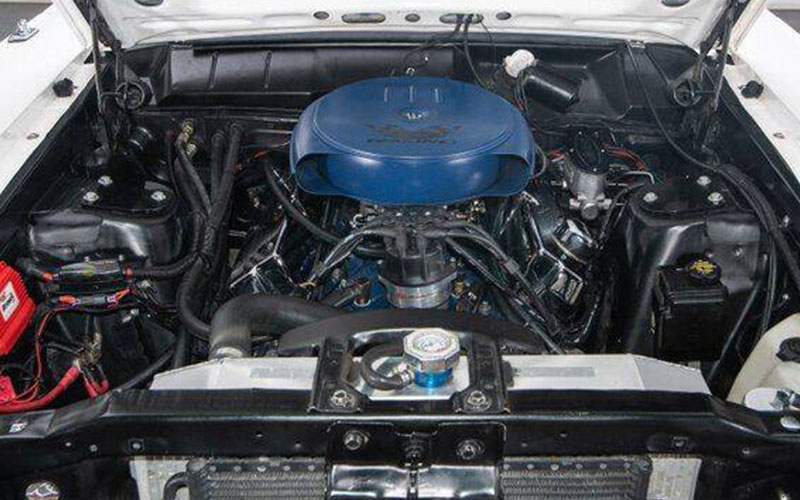
Similar to the El Caminio, the Ford Ranchero of the same time shared a lot with its Ford Torino brother, both in design and performance. It shared the same front exterior styling, same interior options, and was also rear-wheel-drive with similar suspension components. This correlation also carried over the performance engines that the Torino offered. The biggest engine fitted into the Ranchero (ever) was the 428 CID Super Cobra Jet V8 that put out 360 horsepower. Not quite as many ponies as the 454 in the El Camino, but still a hefty offering for a ute.
Other options found in the Ford Ranchero included a single 250 CID straight-6 engine and a five varying V8 offerings below the 428. Paired to these engines was either a 3-speed manual, 4-speed manual, 3-speed automatic, or 4-speed automatic transmission.
When the Chevrolet El Camino or the Ford Ranchero were setup with their largest, heaviest, most powerful engines available, they could burn rubber like no other. All the weight in the front of these muscle car utes with empty truck beds at the rear created the perfect storm for spinning the tires. That’s awesome, but how did they fair when it came to actually utilizing them for utility vehicles?
Actually Utilizing a Ranchero or El Camino
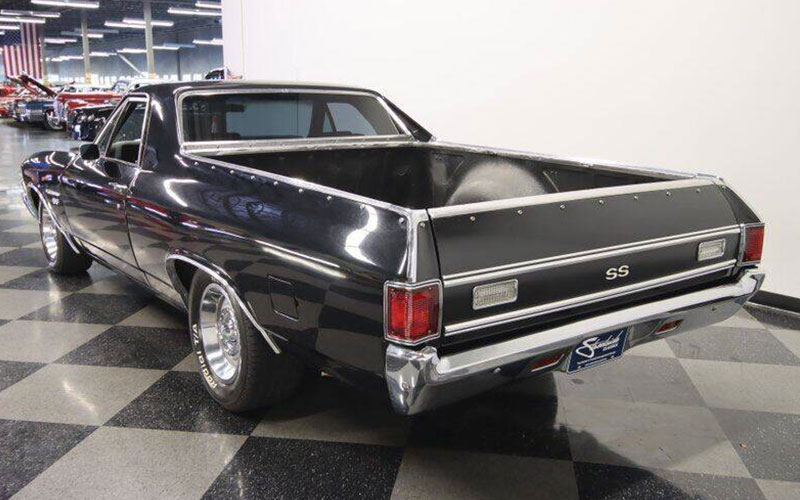
The Chevrolet El Camino featured 73” by 59” box that featured a wall height that angled from 13 inches at the rear to 17 inches towards the front. In comparison to a modern-day Silverado with a short bed, that’s pretty close to the same size box dimensions (except in terms of height). Payload numbers are around 1000 lbs, but that rear will look like a low rider if you try to add that much weight. The rear suspension was based on a car rather than a truck, so some camping gear or a dirt bike is about all you can carry in the back comfortably.
As for towing, Chevrolet did offer a bolt on bumper tow hitch that was said to allow the El Camino to pull up to 1000 lbs, but there are some owners that have claimed to tow higher loads with some rear-end modifications and better brakes.
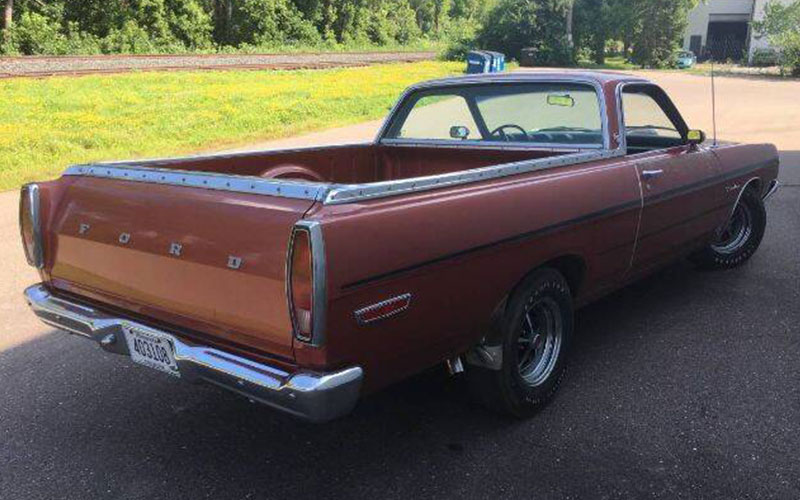
Ford Ranchero boxes measure out to 78 inches in length, 61 in width, and a little over a foot in height all around. That similar numbers to a standard F-150 bed today, just a lot shorter like the El Camino’s comparison. Ford loved to say how much more the Ranchero could carry than the El Camino at the time, but it was only about 250 pounds more than it. Plus, that 1250 lb max payload capacity was only available with the heavy-duty suspension package. So, you can throw similar items into the back of the Ranchero that you could in the El Camino, and then throw in just a bit more.
Towing wasn’t really noted by Ford in their brochures, but it essentially could do the same 1000 lbs towing capacity that El Camino could. Adding a tow hitch was an aftermarket job though. Owners over the years have outfitted the Ford Ranchero with a stiffer rear suspension, stronger axle, and better breaks to go beyond that 1000-pound number.
Classic Ute Interiors
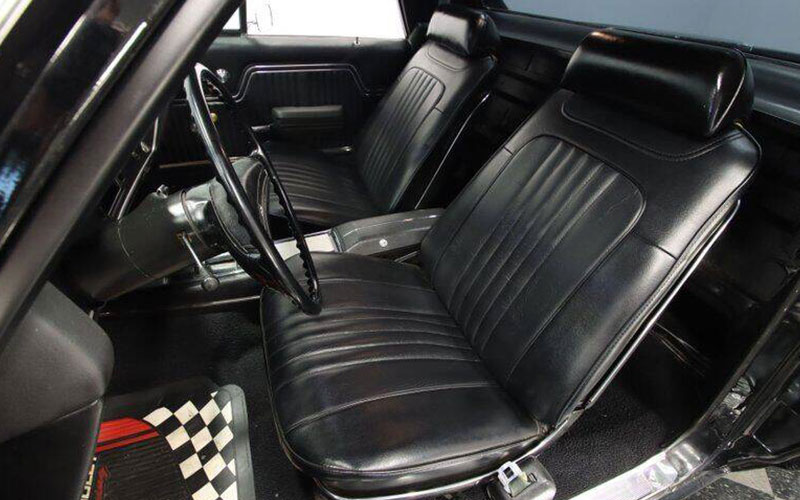
Since the El Camino was based on the Chevelle of the same time, it has a very similar interior. Seating was wrapped in either cloth or vinyl, there was a choice between bench or bucket seating, it had the Chevelle’s instrument cluster, had AM/FM radio, available air conditioning, and hand crank windows. Aside from some SS badging, the interior remained virtually the same throughout the trim levels.
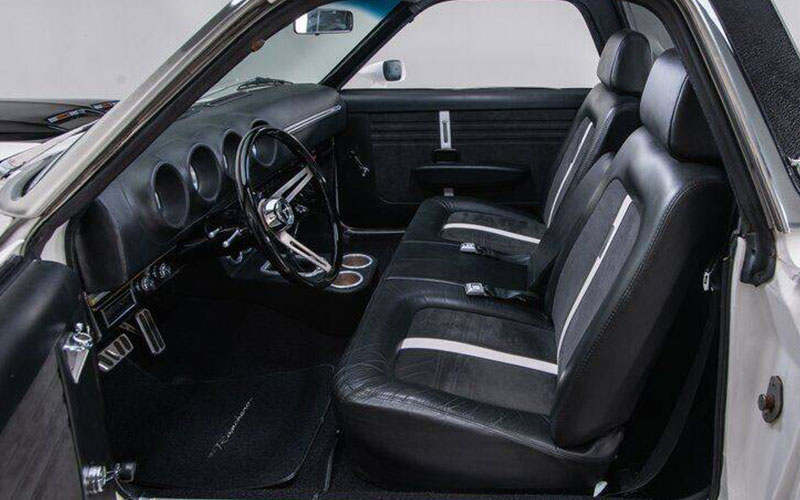
The Ford Ranchero gained the Torino’s interior elements. It had either bench or bucket seating with vinyl upholstery, the four-gauge cluster from the Torino, AM/FM radio, air conditioning, and hand crank windows. Top trims didn’t really add much to the interior aside from standard bucket seats with the center console and an electronic clock.
The Verdict: Ford Ranchero or Chevrolet El Camino
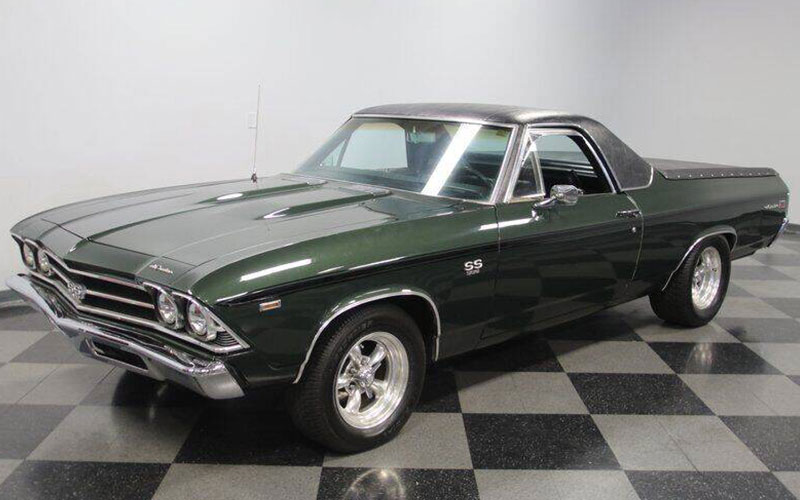
The Ford Ranchero provided a slightly larger truck bed, a slightly higher max payload, and a marginally nicer interior, but this was the peak pony car era. The Chevrolet El Camino had all the horsepower and is the more widely remembered between the two. If you were shopping back in the day for an American made ute, sure the Ford Ranchero was the better option for actual utility. For those looking for a unique muscle car that could tear up the asphalt, the Chevrolet El Camino was your choice.
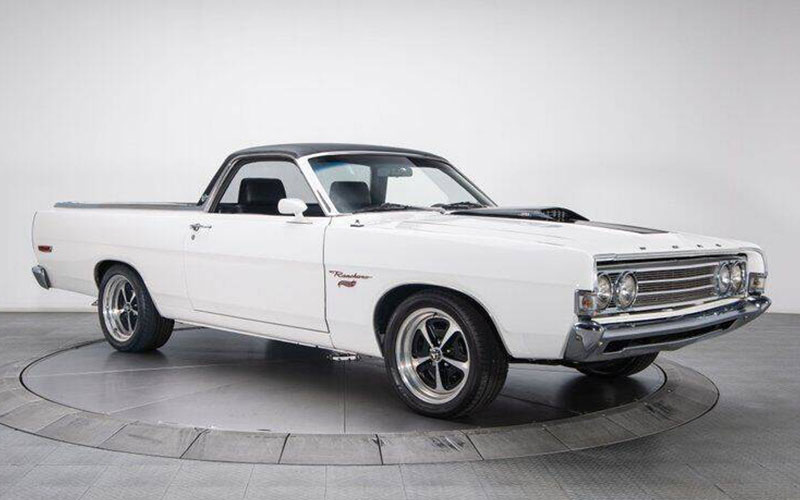
If you’re shopping for a classic American ute, you probably already have your mind set on the El Camino. It was more popularized, more powerful, and was around for a while longer, so there’s more models to pick from. The fourth generation Ford Ranchero lasted only two years before Ford changed up its styling, so availability is a little scarcer. But the Ranchero doesn’t fetch as high of a price as the El Camino even though it’s technically rarer, so if you want a classic ute for a fair price, the Ford Ranchero might actually be the choice for you.


